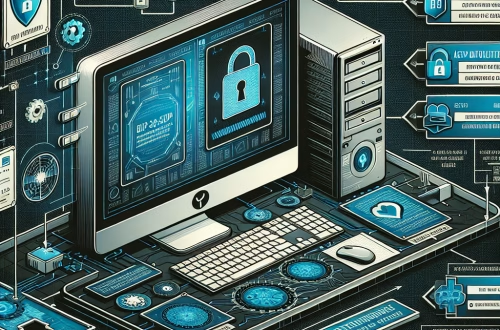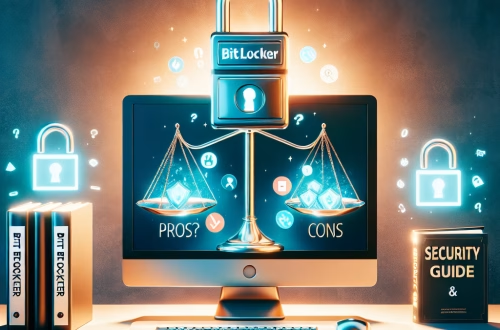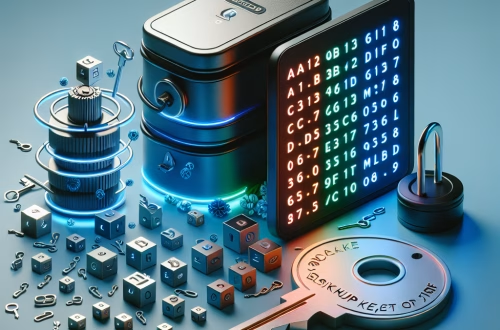bitlocker unlock command Explained
The bitlocker unlock command refers to the process of decrypting and accessing a BitLocker-encrypted drive when standard authentication methods (e.g., PIN, password, or TPM) fail. This typically involves using the manage-bde utility in Command Prompt or PowerShell to manually unlock the drive with a recovery key or password. Common triggers for needing this command include hardware changes (e.g., replacing a motherboard), firmware updates, or repeated failed authentication attempts. The command ensures secure data access while maintaining BitLocker’s encryption integrity.
What This Means for You
- Immediate Impact: If the BitLocker unlock command is required, your system may halt at a recovery screen, preventing boot-up or data access until the correct recovery key or password is entered.
- Data Accessibility & Security: Without the recovery key (stored in your Microsoft account, a USB drive, or a printed copy), your encrypted data remains inaccessible. Always back up the key using
manage-bde -protectors -get C:to verify its existence. - System Functionality & Recovery: Unresolved BitLocker lockouts can render your PC unusable. Advanced recovery may require booting into WinRE (Windows Recovery Environment) and using Command Prompt.
- Future Outlook & Prevention Warning: Frequent unlock prompts may indicate underlying hardware or firmware issues. Proactively check TPM (Trusted Platform Module) status via
tpm.mscand update firmware to avoid recurrence.
bitlocker unlock command Solutions
Solution 1: Unlock Using the Recovery Key
When BitLocker enters recovery mode, follow these steps:
- Boot the system and note the 48-digit recovery key ID displayed.
- Locate your recovery key (Microsoft account, USB, or printed copy).
- Enter the key when prompted. If the screen skips the prompt, press Esc for “More options” and select “Enter recovery key.”
- If successful, the system will boot normally. Back up the key afterward via
manage-bde -protectors -add C: -RecoveryPassword "YOUR_KEY".
Solution 2: Unlock via Command Prompt (WinRE)
If the recovery key fails or the drive is not bootable:
- Boot from a Windows installation USB and select Repair your computer > Troubleshoot > Command Prompt.
- Identify the encrypted drive letter using
diskpart>list volume(typically not “C:” in WinRE). - Unlock the drive:
manage-bde -unlock X: -RecoveryPassword "YOUR_KEY"(replace “X” with the correct drive letter). - Suspend BitLocker temporarily to troubleshoot:
manage-bde -protectors -disable X:.
Solution 3: Reset TPM or Clear Keys
TPM-related issues often trigger BitLocker locks:
- Access BIOS/UEFI and reset the TPM (option varies by manufacturer).
- In Windows, open
tpm.mscand click Clear TPM under “Actions.” - Re-enable BitLocker afterward:
manage-bde -on C: -usedspaceonly.
Solution 4: Data Recovery as Last Resort
If the drive is corrupted or keys are lost:
- Use a Linux live USB to access raw data (limited to unencrypted files).
- Professional services may decrypt drives via hardware extraction (costly and not guaranteed).
People Also Ask About
- Why does BitLocker keep asking for a recovery key? Typically due to TPM errors, Secure Boot changes, or failed authentication attempts.
- Can I bypass BitLocker without a recovery key? No—Microsoft designed BitLocker to be cryptographically secure without backdoors.
- How do I find my BitLocker recovery key? Check your Microsoft account (Microsoft account recovery key page), Active Directory (for enterprise users), or physical backups.
- Does unlocking BitLocker decrypt the drive? No—unlocking grants access while the data remains encrypted.
Other Resources
For advanced scenarios, refer to Microsoft’s official BitLocker recovery guide or the manage-bde documentation.
How to Protect Against bitlocker unlock command Issues
- Back up recovery keys to multiple secure locations (Microsoft account, USB, printout).
- Update firmware and TPM drivers regularly via
tpm.mscor manufacturer tools. - Enable TPM + PIN authentication for added security:
manage-bde -protectors -add C: -TPMAndPIN. - Monitor BitLocker status with
manage-bde -statusand address warnings promptly.
Expert Opinion
BitLocker’s unlock command is a critical failsafe, but its reliance on hardware (TPM) and external keys introduces single points of failure. Enterprises should prioritize Active Directory key escrow, while individuals must treat recovery keys with the same urgency as passwords—losing both can mean irreversible data loss.
Related Key Terms
- BitLocker recovery key not working
- TPM error BitLocker
- manage-bde command prompt
- BitLocker automatic unlock issue
- Windows 11 BitLocker fix
*Featured image sourced by Pixabay.com




